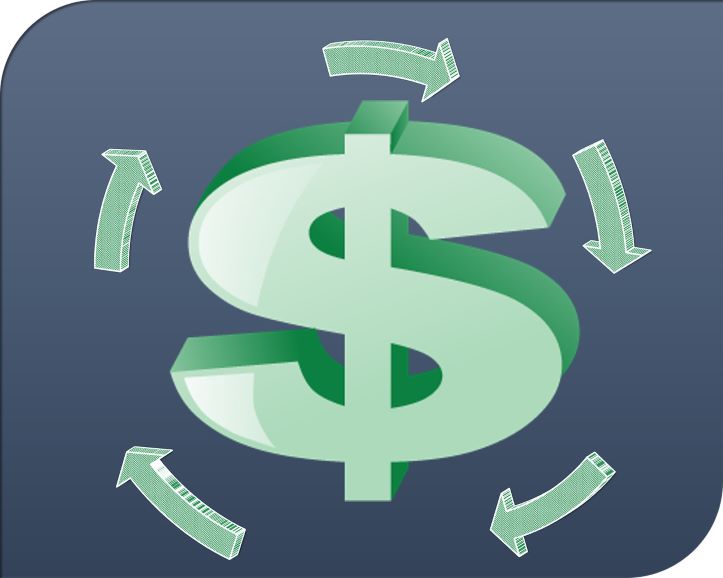In the world of business, mastering how to manage cash flow in a business is akin to conducting a symphony. Just as a conductor skillfully orchestrates various instruments to create harmonious melodies, a successful entrepreneur must navigate the intricate rhythms of financial inflows and outflows. This dance is crucial, for it can spell the difference between a thriving enterprise and one struggling to stay afloat.
We will explore practical financial strategies in this blog post. From forecasting the future to trimming excess costs, these techniques will guide you towards a confident mastery of cash flow management, ensuring your business not only survives but flourishes in the ever-changing economic landscape. So, let’s tighten our financial shoelaces and step onto the dance floor of fiscal finesse.
What is Cash Flow Management?
Cash flow management is the financial compass that guides a business’s financial health. It’s the art of monitoring, analyzing, and controlling the movement of money in and out of your business. Think of it as the conductor of an orchestra, ensuring that every note (transaction) is played at the right time and in harmony.

Importance of Cash Flow Management in a Business
Cash flow management isn’t just number-crunching – it’s a lifeline for your business’s survival and growth. Here’s why it matters:
Sustaining Operations: Cash flow keeps the lights on. It ensures you can pay employees, cover overhead costs, and keep the wheels turning in day-to-day operations. Without healthy cash flow, your business could stall.
Seizing Opportunities: Cash on hand gives you the power to grab opportunities as they arise. Whether it’s investing in expansion, launching a new product, or entering a new market, a strong cash flow provides the fuel to pursue growth.
Planning and Budgeting: Cash flow management helps you create accurate forecasts and budgets. With a clear view of incoming and outgoing funds, you can plan strategically and make informed decisions to steer your business in the right direction.
Mitigating Risks: Fluctuations in cash flow can expose your business to risks. By identifying potential cash crunches early, you can take preventive measures to avoid disruptions in operations or damage to your business’s reputation.
Building Resilience: A well-managed cash flow acts as a safety net during tough times. It ensures you have the financial stability to weather economic downturns, unexpected expenses, or shifts in the market.
10 Strategies on How to Manage Cash Flow in a Business
Accurate Financial Tracking
At the heart of every successful cash flow management strategy lies a simple but powerful principle: accurate financial tracking. Imagine this as your business’s GPS system, guiding you through the labyrinth of numbers and transactions. Monitoring your financial inflows and outflows isn’t just an option; it’s a necessity for staying in control.
Keep a Watchful Eye
Regular monitoring is key. Just as you wouldn’t drive blindfolded, don’t let your business navigate the financial landscape without clear visibility. Keep track of every dollar that enters and exits your accounts.
Streamlined with Software
Embrace technology’s helping hand. User-friendly accounting software can transform complex financial jargon into straightforward insights. Say goodbye to confusing spreadsheets and hello to organized records that simplify your life.
Cash Flow Forecasting
Picture this: you’re a seasoned surfer riding the waves of your business’s finances, effortlessly anticipating each rise and fall. Welcome to the world of cash flow forecasting, where you don’t need a crystal ball – just some historical data and a knack for trend spotting.
The past holds valuable clues. Dive into your business’s financial history to understand its natural rhythms. Analyze patterns to uncover seasonal highs, lows, and everything in between.
A keen eye on upcoming trends can transform you into a financial trendsetter. Pay attention to industry changes, market shifts, and economic indicators that could impact your cash flow.
Armed with historical data and trend insights, you’re now the captain of your financial ship. Project future cash flow with confidence, and adjust your strategies to match predicted ebbs and flows.
Smart Invoicing Strategies
In the dance of cash flow, invoices are your partners – they set the tempo for your business’s financial rhythm. Let’s explore two smart invoicing moves that can make the difference between a harmonious melody and a discordant jumble.
Timing is Everything
Imagine sending a thank-you note long after a gift has been given – it just doesn’t feel right. Apply the same logic to invoicing. Send clear and concise invoices promptly after services or products are delivered. This not only shows professionalism but also nudges your clients to remember their obligations.
Early Bird Rewards
Everyone loves a good deal. Offer incentives for early payments to keep the cash flowing smoothly. A small discount or a token of appreciation can motivate clients to settle their accounts promptly, ensuring a steady beat in your financial dance.
Rigorous Expense Management
Think of your business’s cash flow as a garden – to let it flourish, you need to prune away the unnecessary weeds. Unnecessary expenses are like weeds that suffocate your financial garden. Regularly inspect your spending to identify and eliminate costs that don’t contribute to growth. Cutting these deadweight expenses can give your cash flow room to breathe.
Suppliers aren’t adversaries; they’re partners in your business journey. Negotiate with suppliers to secure favorable terms and discounts. Building a mutually beneficial relationship can help you reduce costs while maintaining quality.
Just as a well-pruned garden thrives, a leaner business operates more efficiently. Cutting excess fat from your expenses not only boosts your bottom line but also creates a streamlined path for your cash flow to flow freely.
Cash Reserves: Build a Safety Net
Life has its surprises, and so does business. Whether it’s a sudden equipment breakdown or a client delay, having a reserve fund ensures you’re not caught off guard. Maintain a fund that covers a few months’ worth of expenses to weather storms.
Imagine walking on a tightrope without a safety net below. The same applies to your business – cash reserves provide stability during lean periods or unforeseen challenges. A comfortable balance ensures your business remains on solid ground even when revenue takes a dip.
Cash reserves do more than just protect your business; they offer peace of mind. Knowing you have a financial buffer boosts confidence in your decision-making, allowing you to focus on growth rather than constantly worrying about financial hiccups.

Strategic Debt Management: Borrow Wisely
Debt – it’s a double-edged sword that can either propel your business forward or become a financial anchor. Just as a car needs fuel to go the distance, your business may require a financial boost for growth opportunities. Utilize loans and credit strategically to invest in expansion, innovation, or new ventures that promise a healthy return on investment.
Imagine juggling while riding a unicycle – that’s debt management. Carefully consider your borrowing capacity and the impact on your cash flow. Your aim? To avoid overburdening your business with debt payments that suffocate your financial flexibility.
Managing debt payments is like dancing – timing matters. Diligently make your payments on time to maintain a positive credit history. A strong credit profile not only helps your current borrowing but also sets the stage for future opportunities.
Diversified Revenue Streams
Relying on a single source of income is like building a house on shifting sands. The solution? Diversify your revenue streams to create a stable foundation that can weather any storm.
Think of having a garden with a single type of flower. A diverse array of blooms not only looks beautiful but also provides resilience against disease. Similarly, offering multiple products or services aligning with your core offering can shield your business from market fluctuations.
Explore uncharted territories within your industry. Don’t be afraid to launch new products or services that resonate with your audience. These additions can attract fresh customers while also giving existing ones more reasons to engage with your business.
A diversified revenue strategy is your safety net when one income source wanes. Just as a table with multiple legs stands strong, a variety of revenue streams can offset potential losses, maintaining your cash flow’s stability.
Lean Inventory Practices
In the dance of cash flow, inventory management is a choreography that requires precision and finesse. Let’s learn how to waltz with your inventory, keeping steps light to prevent excess cash from being tied up.
Picture a chef prepping ingredients – too much or too little can spoil the dish. Similarly, excess inventory ties up precious cash and storage space. Analyze historical sales data and demand patterns to determine optimal inventory levels for each item.
Think of just-in-time (JIT) inventory as a minimalist’s approach to warehousing. Instead of stockpiling items, receive goods only as needed to fulfill customer orders. This not only reduces storage costs but also minimizes the risk of holding obsolete or slow-moving items.
JIT isn’t a solo act – it requires a harmonious supply chain. Communicate effectively with suppliers to ensure timely deliveries without excess lead time. This keeps your inventory pipeline flowing smoothly.
Negotiation Skills: Get the Best Deals
Negotiation is a power tool that can turn a good deal into a great one. Sharpen your negotiation skills and step onto the negotiation floor equipped with strategies that boost your cash flow’s health.
Imagine negotiation as a tug-of-war. Your aim isn’t to pull your opponent down, but to find a middle ground that benefits both parties. Hone your persuasive skills, communicate clearly, and articulate the value you bring to the table.
Negotiation isn’t about crushing opponents; it’s about creating mutually beneficial outcomes. Whether you’re dealing with suppliers, clients, or creditors, seek terms that allow you to thrive without squeezing the other party dry.
Secure discounts, extended payment terms, or other favorable conditions that bolster your cash flow. Every penny saved or gained contributes to a healthier financial landscape.
Regular Financial Check-ins
Ignorance isn’t bliss – it’s a risky game. Regular financial check-ins are your crystal ball. It allows you to foresee potential challenges and make informed decisions. Imagine your business as a ship on a voyage. Regular financial assessments are your navigation system, helping you spot choppy waters before they become treacherous storms. Identifying issues early gives you time to course-correct before they escalate.
Numbers don’t lie; they tell the story of your business’s health. Regular check-ins provide up-to-date financial data that can guide your decisions. Whether it’s scaling up, tightening belts, or exploring new opportunities, you’ll have the insights you need to move confidently.
Stay Ahead, Stay Agile
Business isn’t a static entity; it’s a dynamic, ever-changing landscape. Regular financial check-ins keep you ahead of the curve, adapting to shifts in the market, industry trends, and internal changes.
Conclusion
In the grand performance of your business, cash flow management takes center stage as the conductor of a harmonious symphony. Each technique we’ve explored in this journey is like a musical note, contributing its unique melody to the overall composition. By diligently implementing these strategies – from accurate tracking and forecasting to prudent debt management and diversified revenue streams – you’re not merely managing numbers; you’re creating financial harmony.
Through this orchestrated effort, your business gains the ability to navigate the ebbs and flows of the market, seize opportunities, and weather uncertainties. Just as a symphony captures hearts with its enchanting melodies, effective cash flow management captivates success and stability. So, take the baton, lead your business’s financial orchestra, and watch as the sweet music of prosperity fills the air.
Learn what are the characteristics of a successful entrepreneur for further knowledge.








